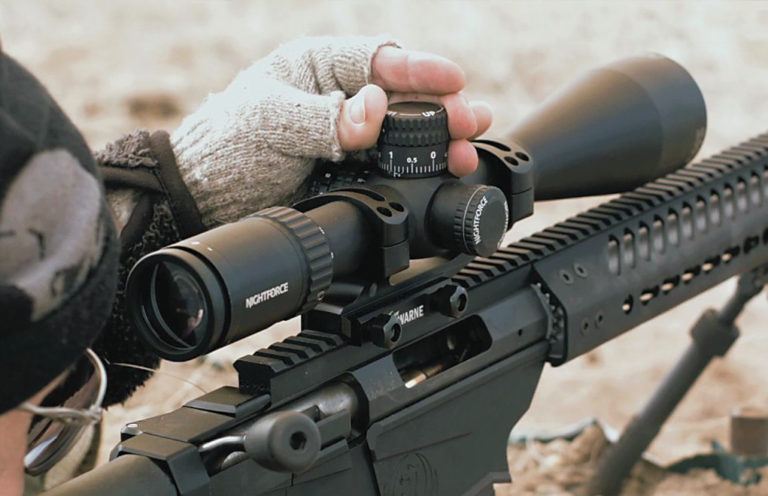
So, you want to buy a precision scope?
What you need to consider when buying a precision scope:
- Ideal Magnification
- Best Value
- Where the glass is made
- Coating quality
- Features (main-tube size, elevation, zero-stops)
- Locks, Brakes And Capped Windage
- Front Focal Plane Vs. Second Focal Plane
- Reticle
- Mils Vs. MOA
So, you went out and bought a new precision rifle, and now you want to purchase a new optic. But there are so many choices — from Athlon to Vortex, Barska to Zeiss — where do you start? How do you wade through the hype and get down to the meat and potatoes of the questions?
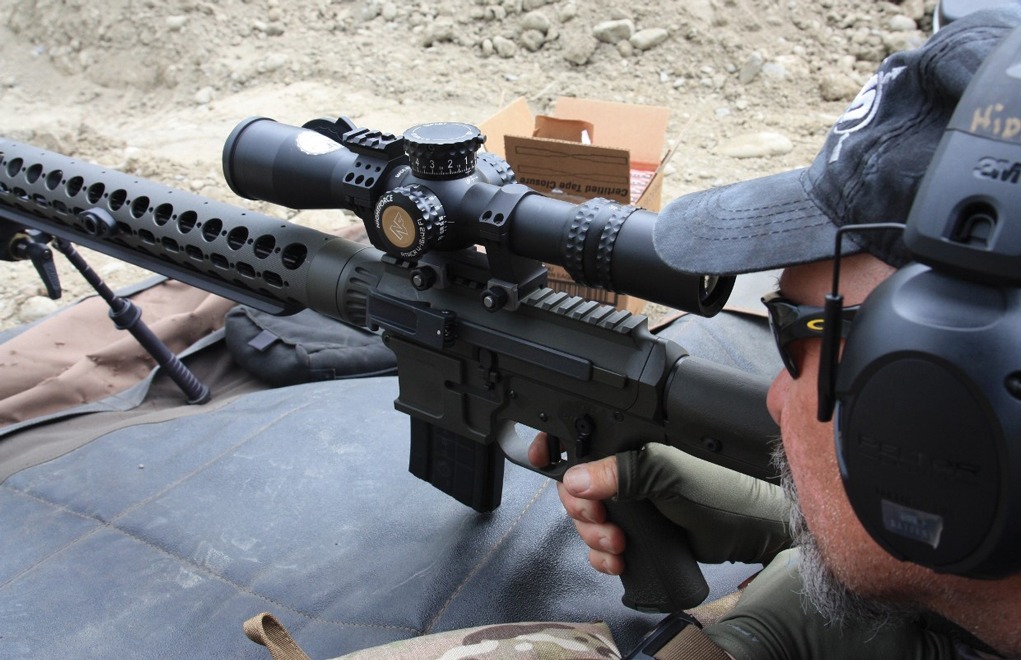
excellent combination for tackling a large variety of long-range work.
Let’s start with the easy ones: What’s your intended use? It’s that simple. Do you only have access to 200 yards and plan on putting the scope on your .308 Win.? Or, are you interested in shooting PRS, or F-Class or just plinking — because all these details matter. The first thing you need to do is be honest about your intended use for the scope.
To reach 1,000 yards with a .308 Win. rifle, you want at least 40 MOA of usable adjustment from a 100-yard zero. And trust me: You want a 100-yard zero on your rifle. So, if you have a scope with 60 MOA of adjustment, you’re clearly in good shape. On the contrary, you don’t need a scope with 32 mils of adjustments if you can only reach 600 yards at your local range. In short, the cartridge you’re shooting matters, too. By understanding your cartridge choice, you can determine the best scope for your given application.
Ideal Magnification
In reality, magnification has very little bearing on how far you’re shooting, but it does on what you’re shooting. If you’re shooting F-Class on paper, you want to see the X-ring, so those shooters use very high-magnification scopes — but the trade-off is less elevation adjustment. You don’t want a 55x optic for your .338 Lapua Mag. if you plan on shooting to 1 mile because you’ll run out of adjustment. Most field shooters stick to scopes that hover around 25x or less, and many are shooting them below 18x and enjoying the increased elevation adjustment. Magnification is a double-edge sword in the field.

Magnification also magnifies problems in the air, such as mirage. Yes, you can shoot 1,000 yards with a 10x scope, but most shooters will use a scope with a 12-18x max to maintain a good field of view and a clear sight picture. Get a little bit more magnification just so you have it, but don’t overdo it — you don’t need a 32x scope to shoot 1,000 yards on steel. You want 25x or less.
More Long-Range Shooting Resources:
- Exterior Ballistics Explained
- Ballistics Basics: Initial Bullet Speed
- Which Focal Plane Is Right For You?
- Holding Or Dialing For Drop And Windage?
- Mils vs. MOA: Which Is The Best Long-Range Language?
I personally love and use a ton of 16x scopes. I shoot beyond 1,000 yards all the time, and the 16x does not hold me back. Lots of people are magnification junkies and not for a good reason — more isn’t always more. Balance the magnification and have it suit your mission.
Be Wary Of Budget
So, how much money do you plan on spending? What’s the top end of your budget and is it worth saving a bit more to take the next step up? If your budget is $2,000, you might want to wait until you have $2,500. If your budget is $1,500, you might be better served spending $1,250. Yes, you read that right.
It used to be the top-of-the-line Leupold Mk 4 was $1,250, and now that’s on the lower end of the scope spectrum regarding money spent. If that’s your budget, there’s nothing wrong with it — but accept the fact that you’re looking at an entry-level scope. When everyone was running a Leupold, I switched to Schmidt & Bender, and my budget immediately jumped to $2,000 and up.

Here’s a bit of history: I have one of the first S&B 5-25x PMIIs that hit U.S. shores. It cost me $2,350. Today, that same scope can retail for $3,600. A few things changed over the years with them, but its tough to see the difference. I also have a $7,000 Hensoldt 3-26x, but it doesn’t help me shoot any better than my $2,400 Vortex. In fact, if I walked down to my local mall and placed my Vortex GEN2 Razor on the table next to my $7k Hensoldt, playing the Pepsi Challenge to see who can pick out the scope that cost $7,000 — 50 percent of the people would be wrong.
Where’s The Glass Made?
Quality is not always marked by where the glass is made. Today, you’re not going to win by simply choosing a country of origin. Scopes made in Japan, where many come from these days, are mostly excellent. The majority of great cameras come from Japan. It comes down to what the vendors want to pay and how much quality control goes into the scope. In short, Europeans make some great glass, but they’re no longer the only ones doing so.
Glass And Coatings Quality
In today’s world, every scope looks good out of the box. Everyone has learned enough to make outstanding glass. The optical prescription and how they spec them is such that we, as consumers, can barely tell the difference when all else is equal.
Glass is subjective: No two users see through the scope the same way — especially if it wasn’t properly adjusted for the shooter’s eye. There’s only so many suppliers of raw glass, and the optical difference actually lies in the coatings.
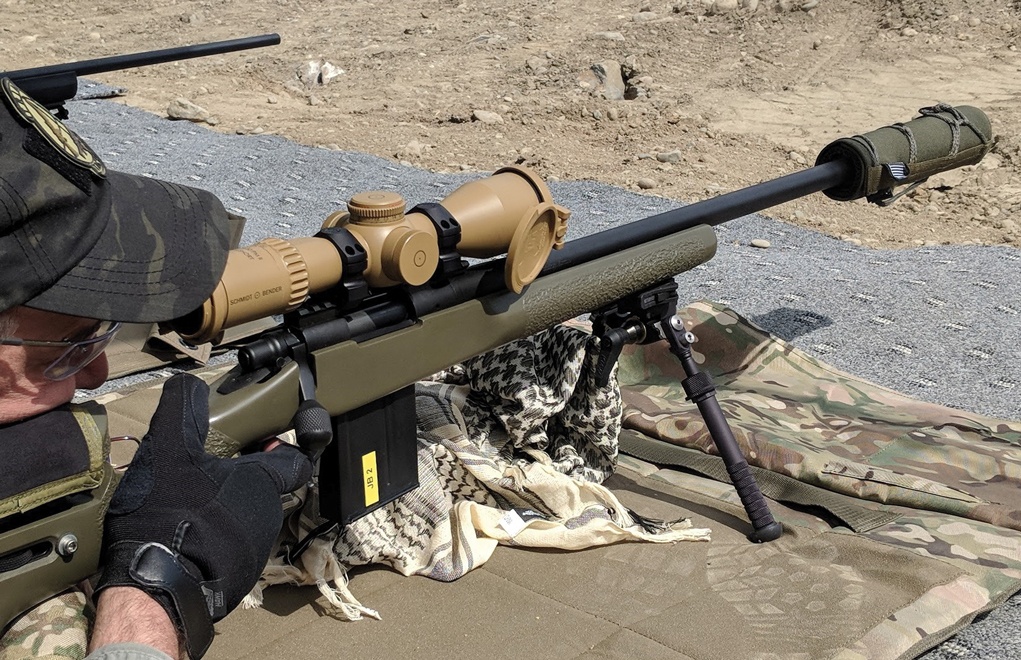
The problem with coatings is durability. So, while a cheap, budget-minded scope often looks just as good as an S&B, in 2 years those coatings will be worn down and not nearly as nice, and the S&B glass will be the same as the day it was bought. Things like sunlight can wear on coatings over time, so just showing up with a scope can degrade it if the coating quality is poor.
Coatings are also what gives a scope its look, and that “look” is the same as asking your friend what his favorite color is. Manufacturers design the coatings and the look for a specific set of conclusions to be made by the consumer regarding what the scope is designed for. Some scopes offer high definition and perform very well in bright light (a designated range scope). If you want low-light performance (for hunting purposes), get a large objective and reduce the power to open up the exit pupil. If you test your scope on 25x at night, you’ll be disappointed — try turning the power down.
Same goes for the elevation: If you want to see the best sight picture, the erector has to be centered. You cannot crank 50 MOA on one scope and compare it to scope that’s centered in the elevation scale.
Glass quality “measurement” is discrete and controlled by the Abbe number. Schott, Hoya and Ohara are brands, not a quality value. Each brand has their equivalent model with a matching Abbe number. In fact, there are versions of Ohara glass that out-score similar Schott models. The bird watchers and star gazers have this down to a science. They can tell what lenses are combined in their scopes to get the desired effect, and none favor one brand over another. They understand what the Abbe number means and how the design is impacted by the choices made in optical design.
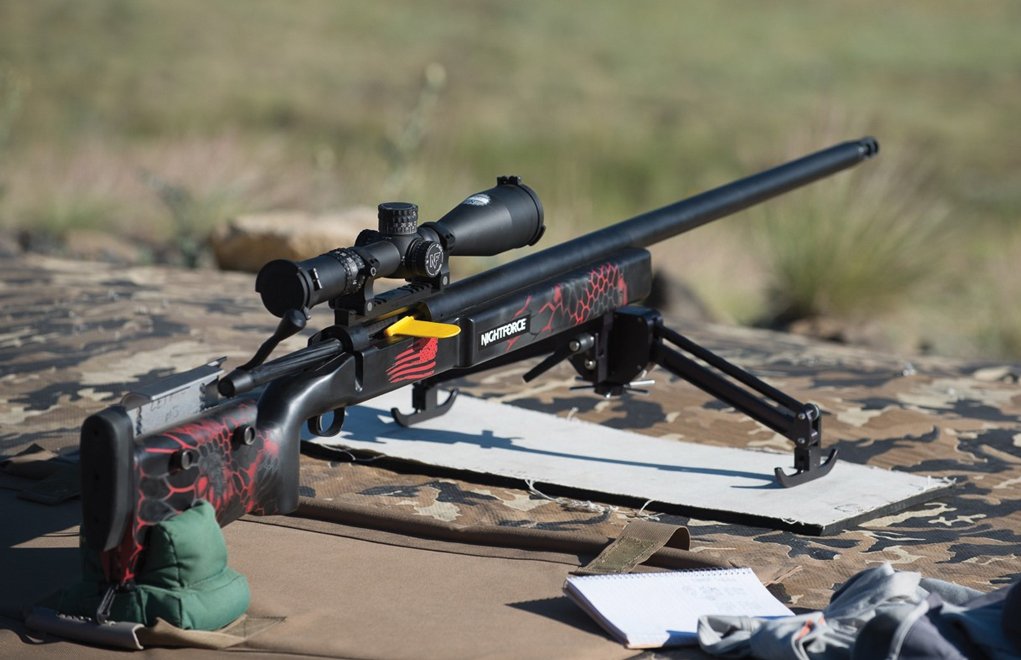
So, with all that to serve as basic information, don’t get wrapped up in the glass. The scope companies have taken care of this for you. Today, glass quality is more a byproduct of your budget than your choice in brand. In many cases, you need a machine to tell the difference.
Features To Look For
Elevation adjustment is attached to main-tube size, with the most common being 30mm to 34mm. The erector inside is the same, so you’re not getting more light out a 34mm vs. 30mm. The brightness of the scope is determined by other factors.
If you’re putting the scope on your 338 Lapua Mag., you want 100 MOA or more of elevation — which is equal to more than 26 mils of adjustment. For ELR (extreme long range) shooting, you want a scope with 28-36 mils of adjustment. Now, if you’re using your .308 Win., you can get away with 15 mils or less, which is about 60 MOA. I do recommend getting more elevation than you think you need because you might decide to swap it over or travel to a location with more distance. Also, the higher the total adjustment range, the heavier a scope will be. Keep that in mind.
Zero-stops are almost mandatory and prevent you from being off a turn when dialing distance. Some scopes allow you to set them at a specific point; other scopes are set at the factory. I always like to have a tiny bit, about 1 MOA of down, below the zero stop.
Locks, Brakes And Capped Windage
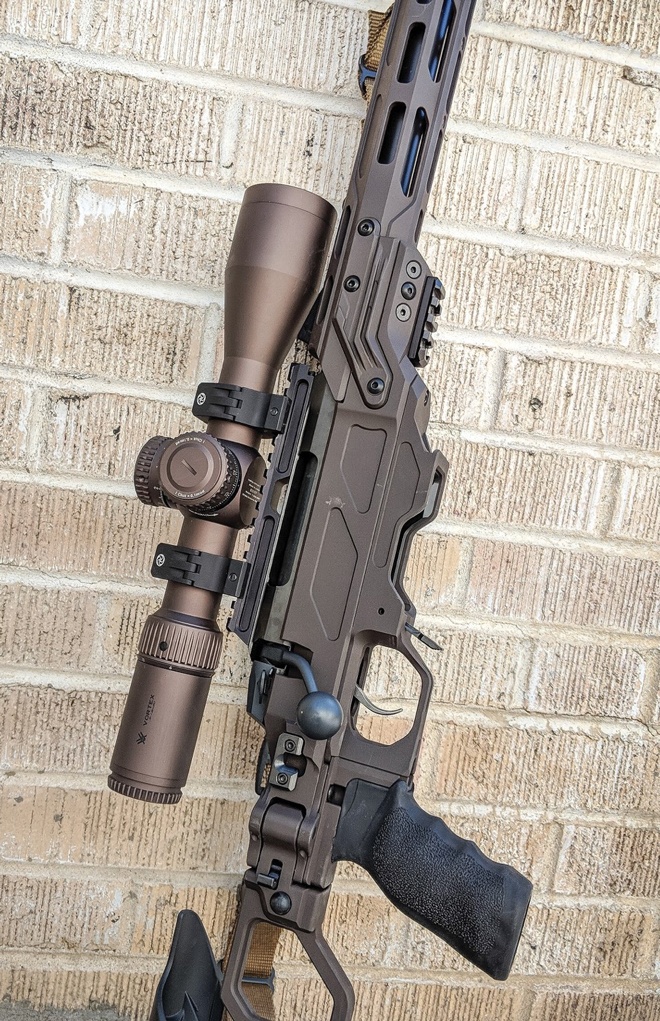
Locking turrets were designed around the military using the Horus Reticle. They are unnecessary for most shooters, but they often come as a default feature. If you have a choice between an S&B Double Turn turret and a locking turret, I recommend the Double Turn. I rarely find a need to use the locks for everyday use, and if I can get a scope cheaper by skipping the locking turret, I will do that.
Front Focal Plane Vs. Second Focal Plane
If you’re a dynamic shooter, field shooter, PRS shooter or a hunter, you want a front focal plane (FFP) scope. If you plan on shooting F-Class, benchrest or if you shoot by yourself, you want to get a second focal plane (SFP) scope. An SFP scope is considered a more durable design and will be a bit cheaper compared to an FFP scope. For this reason, you see guys shooting ELR distances and heavy-recoiling rifles using an SFP scope. You can 1/2 the power on an SFP scope and double the reticle value to provide more range when holding at extended distances.
Reticles, Reticles … And More Reticles
Reticles are like shoes: You get the pair that fits and works for your desired use. You don’t buy sneakers to match your business suit. Same with reticles. Reticles take understanding and training.
We use reticles today like very few did before. The biggest consideration is to match the reticle to the turrets — mils for mils and MOA for MOA. If you don’t need all the clutter, don’t get it. Nobody I know of has won an F-Class match with a Horus reticle holding over. It’s a tool, and one that might not be necessary for your type of shooting.
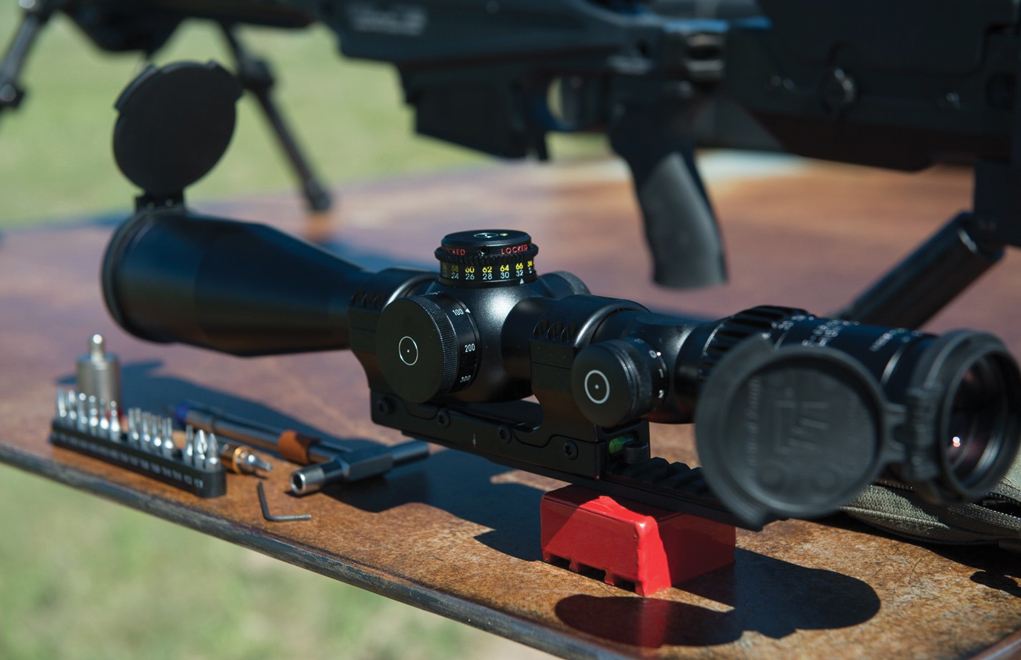
recommending a long-distance rifl escope is so challenging. Every shooter has a specific set of needs and preferences.
Our brains like focus — we like a defined aiming point — and the holdover reticles are designed for speed and big targets. Sure, given time and opportunity we can get very precise with them, but they can also block bullet impact, causing us to hesitate so we have to “think” about what just happened. When you expect one outcome, and that doesn’t happen, some people lock up — and the more you can see the better off you’ll be regarding bullet impact. Also, under stress with limited training, I’ve seen people hold the wrong line, repeatedly.
Practice is important. Holdover reticles also add more money to the scope. The Horus reticle adds $400 to the cost — that’s the licensing fee, which is passed on to the end user.
Look at the schematics of the reticles you’re considering, get to know them and understand what they provide you and what they don’t. You have to wear the shoes, not me.
I trained on the Horus, I have taught others on the Horus, and I personally dislike the Horus. That doesn’t mean I can’t use it — I just don’t like it. I opt for less and do very well with less because I can use my P4F or MSR in the same manner as my Horus reticles.
Mils Vs. MOA
If you’re going to shoot F-Class, then use MOA. If you’re going to shoot PRS, use mils. And if you shoot alone it does not matter — just match the turrets to the reticle.
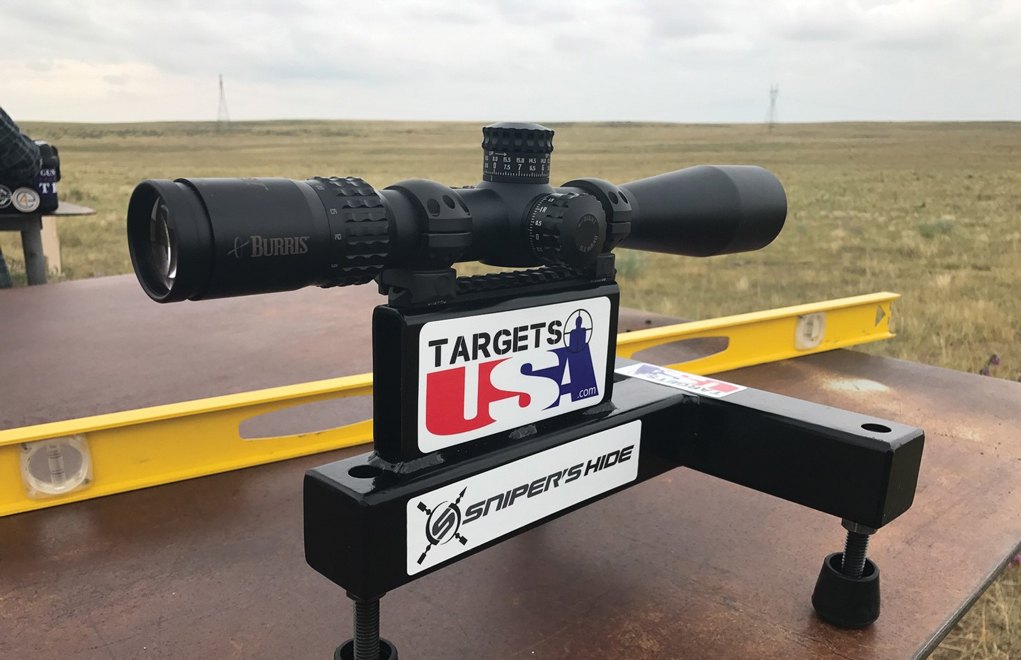
For the guys who say, “I think in inches, therefore, I use MOA,” you’re silly. You know 10 pennies equals a dime … and that’s a mil in a nutshell. You cannot hold the difference, and you can get 1/8th-inch clicks in mils, too. The difference between the two is half a bullet width. I promise you that dialing 7.5 MOA is the same as me using 2.2 mils. We’ll both hit center of the same target. Your DOPE is your DOPE.
The mil vs. MOA argument is tired. I personally think MOA scopes should be retired because the industry cannot decide if they want a MOA scope or IPHY (inches per hundred yards). IPHY scopes are an issue: They are the reason your ballistic computer is wrong. In some instances, you think you own a MOA-based scope, and the company rounded it to inches without saying. That mistake at 1,000 yards is at least 17 inches of difference and compounds the farther out you shoot. So, if you decide to shoot MOA, test it and make sure you have a true MOA riflescope.
So … What’s The Best Scope Out There?
Every day, I get this question: “Who makes the best scope?” Well, if there were one scope that solved it all — we’d all be using it! For a scope to be worthy, the internals need to track and repeat correctly. That’s top priority.
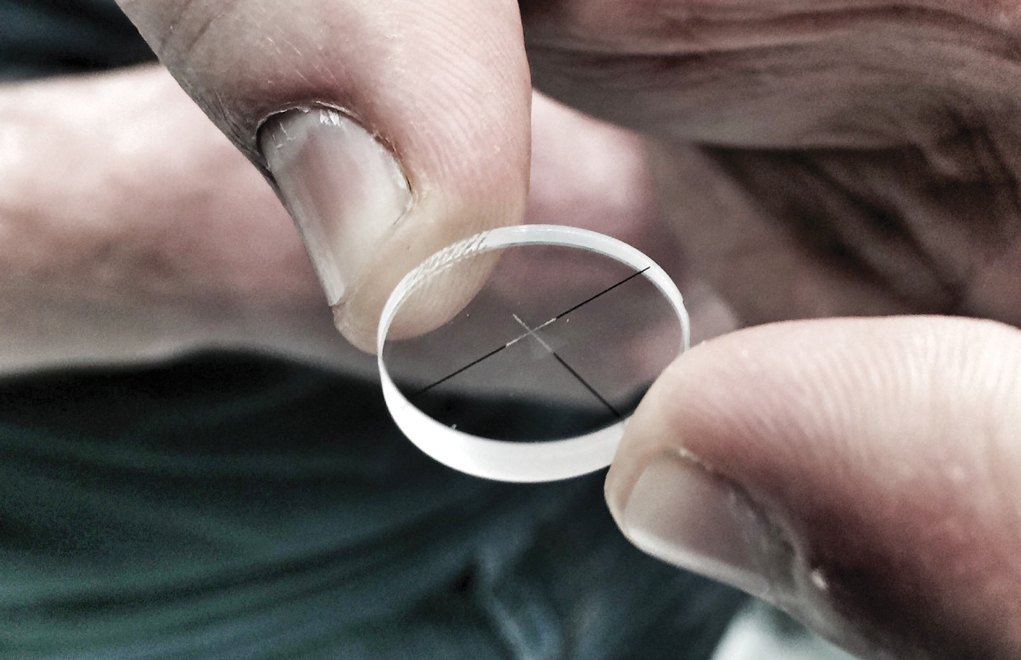
I’ve used everything from the Acme brands to Zeiss — and all scopes in between. Each one has its place, and some are more user-friendly than others. The features I like are not the same as the features someone else will like. You have to define your mission to figure out where you sit in that spectrum.
Do your homework, ask smart questions and don’t let others pick your favorite color for you. Spend your money wisely, observing the features you need against what other people are selling you. Look at the context of your shooting when making this decision. And remember, buying a scope “a level up” can be a very smart move to future-proofing your purchase.
First impressions matter because you have to live with it.
Editor's Note: This article originally appeared in the August 2018 issue of Gun Digest the Magazine.

Next Step: Get your FREE Printable Target Pack
Enhance your shooting precision with our 62 MOA Targets, perfect for rifles and handguns. Crafted in collaboration with Storm Tactical for accuracy and versatility.
Subscribe to the Gun Digest email newsletter and get your downloadable target pack sent straight to your inbox. Stay updated with the latest firearms info in the industry.

![Best Concealed Carry Guns In 2025 [Field Tested] Wilson Combat EDC X9S 1](https://gundigest.com/wp-content/uploads/Wilson-Combat-EDC-X9S-1-324x160.jpg)


![Best 9mm Carbine: Affordable PCCs [Tested] Ruger Carbine Shooting](https://gundigest.com/wp-content/uploads/Ruger-Carbine-Shooting-100x70.jpg)
![Best AR-15: Top Options Available Today [Field Tested] Harrington and Richardson PSA XM177E2 feature](https://gundigest.com/wp-content/uploads/Harrington-and-Richardson-PSA-XM177E2-feature-100x70.jpg)
